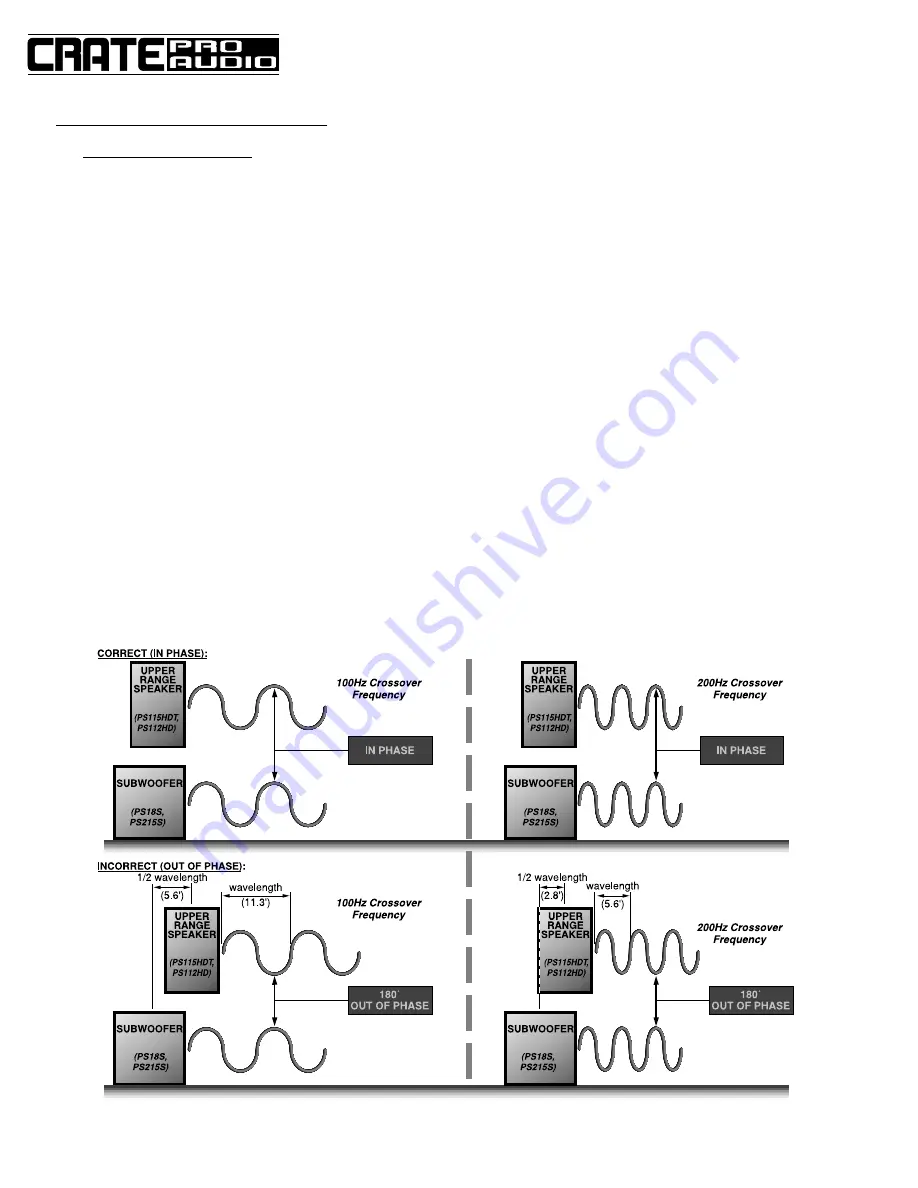
7
LS4
24dB/Octave Active Stereo Crossover
How to Use the Crossover (con’t):
With a Subwoofer (con’t):
Before turning the amplifiers on, you will need to set up the crossover. First, set the Input level to “10” (full clock-
wise). Set the Frequency control to properly match the spatial relationship between the subwoofer and upper range
cabinet. For the subwoofer, the frequency will be low, so make sure the X1/X10 switch is OUT. Start with the
Frequency control at 50Hz, then adjust as needed. Most subwoofers have a useful range of 30Hz to 150Hz, depend-
ing on the type of design. For example, a direct-radiating single 18” speaker can have a frequency response on the
order of 30Hz to 1kHz. For a bandpass design, the range may be as small as 30Hz to 100Hz. (Please refer to your
speaker manufacturer’s specifications.) Ideally, the crossover frequency can be determined by the location of the two
speaker cabinets (the subwoofer and the upper range cabinet). If the two cabinets are in close proximity to each
other and the front faces are aligned, a relatively high crossover frequency can be used, provided you do not exceed
the upper limits of the subwoofer. When the subwoofer is not in close proximity to the upper range speaker cabinet,
in order to avoid phase cancellation the crossover should be set to a frequency whose wavelength is greater than or
equal to twice the distance between the cabinets (greater than 1/2 wavelength separation.). Wavelength can be
determined by the following formula:
wavelength (in feet)
=
c / ƒ
where: c
=
speed of sound (1130 ft/sec)
ƒ
=
frequency
Example: crossover frequency of 100Hz: 1130 / 100 = 11.3 ft
At 100Hz the wavelength is 11.3 feet. If the subwoofer is not in close proximity to the upper range speaker, no dras-
tic cancellations will occur. The further the subwoofer is moved forward or backwards, the lower the crossover fre-
quency needs to be. Left to right orientation does not have the same effect.















